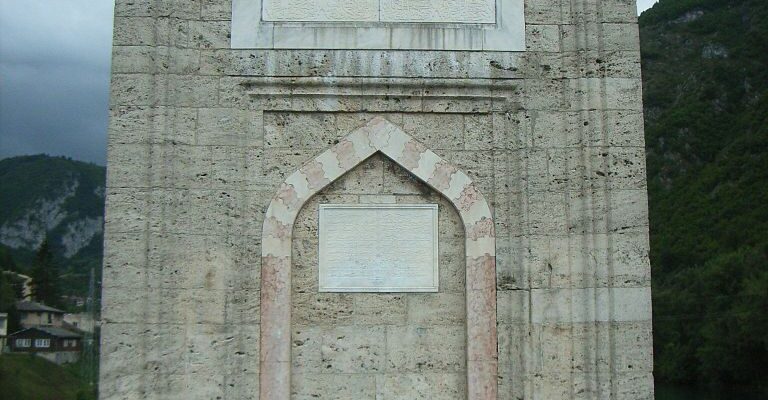Visegrad Bridge (Mehmed Paša Sokolović Bridge)
Visegrad Bridge is a medieval bridge connecting the two banks of the Drina River in the Bosnian city of Visegrad. The stone bridge spans 179.5 meters and is divided into eleven spans with a width of 10.7 to 14.8 meters. The monumental structure has been standing here for more than 450 years. It has the status of a monument of engineering art of the Ottoman Empire and since 2007 it has been included by UNESCO in the list of World Heritage Sites.
.Many tourists come to the small town to see the perfectly preserved bridge. The attitude towards the Visegrad Bridge has always been special. Since ancient times, the Drina River has been described in historical and philosophical literature as an important boundary between East and West, Christian and Muslim worlds.


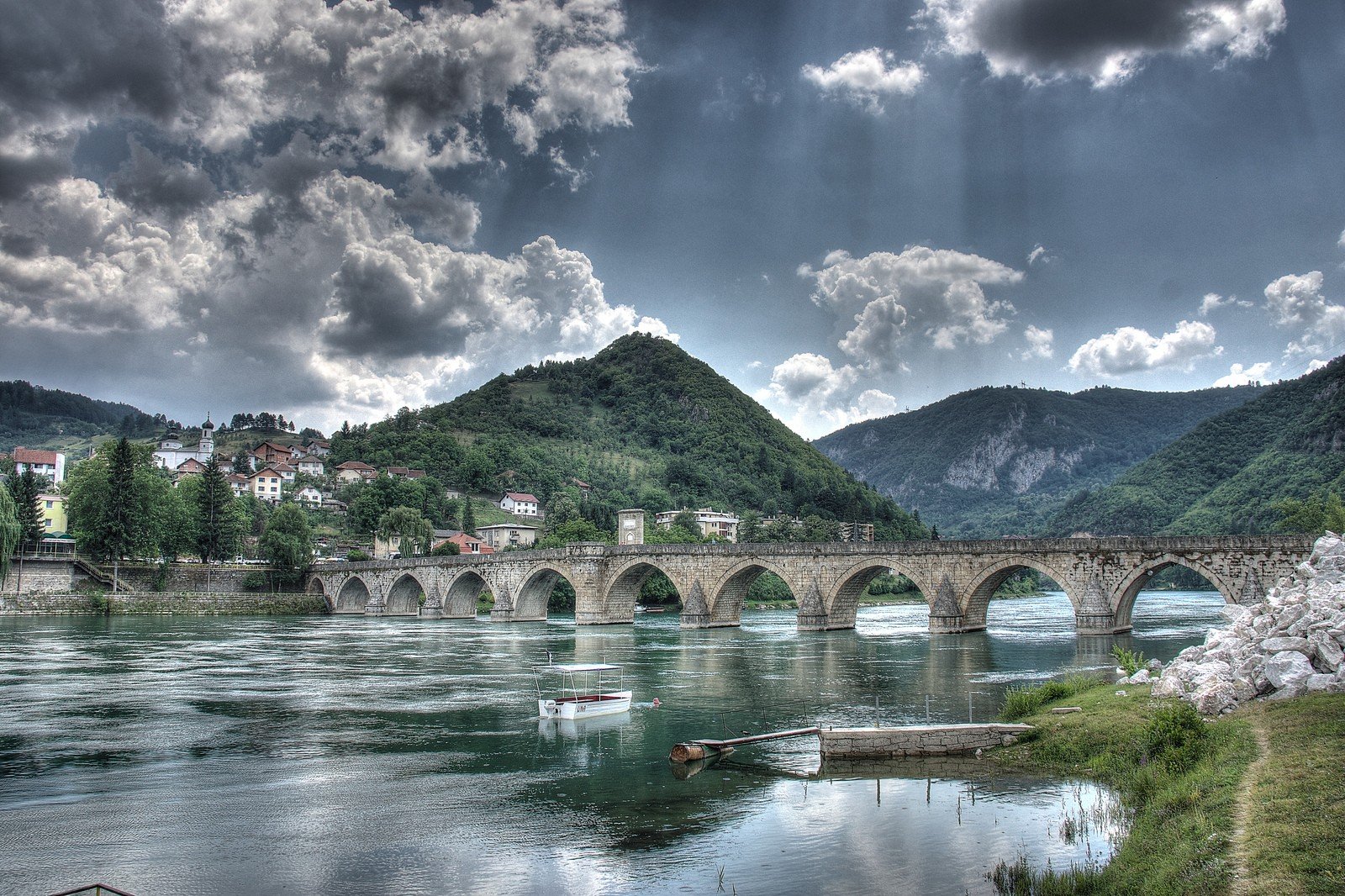
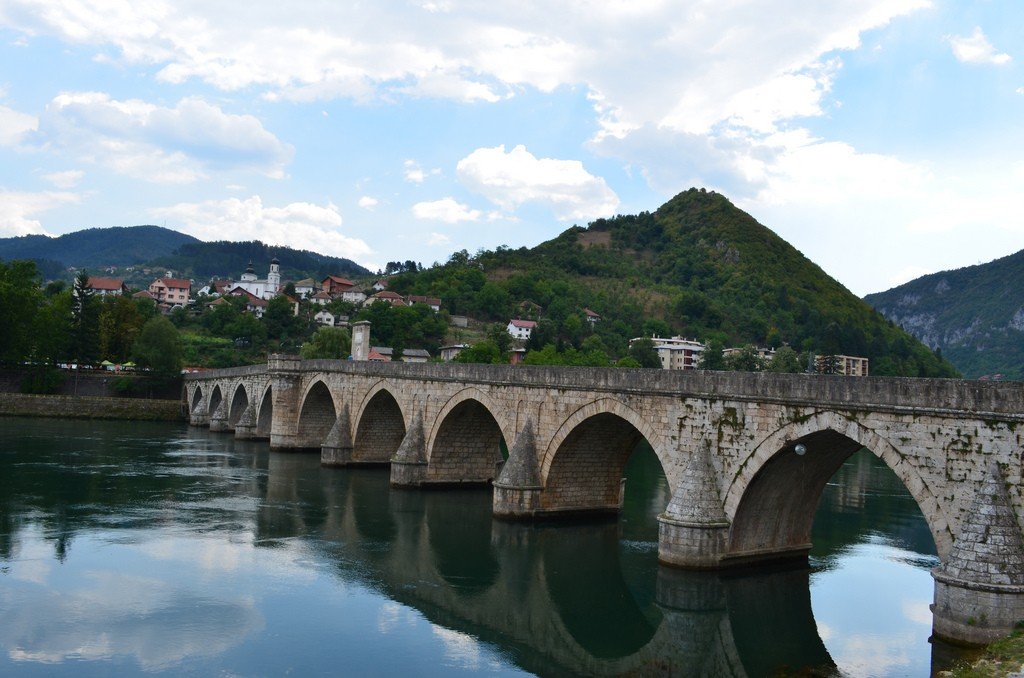
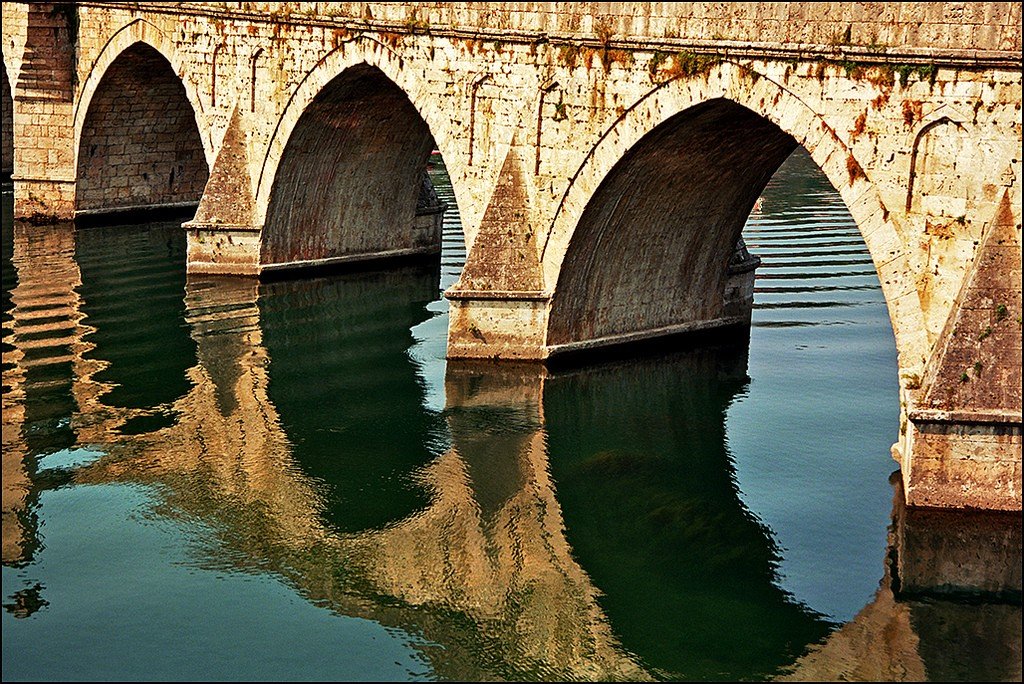
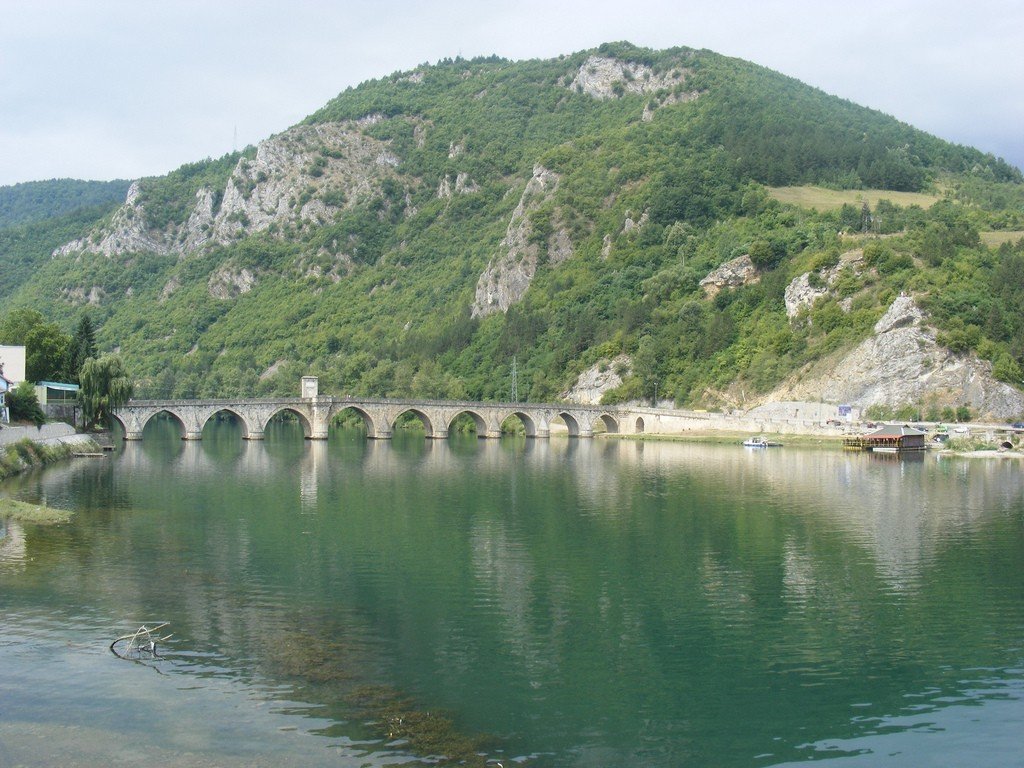
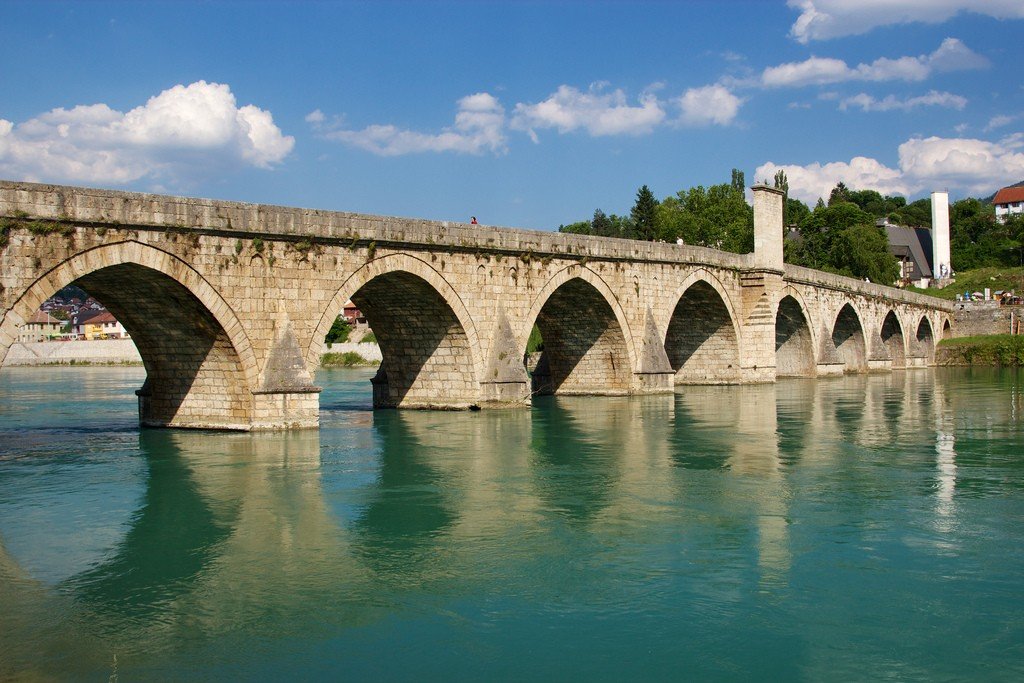
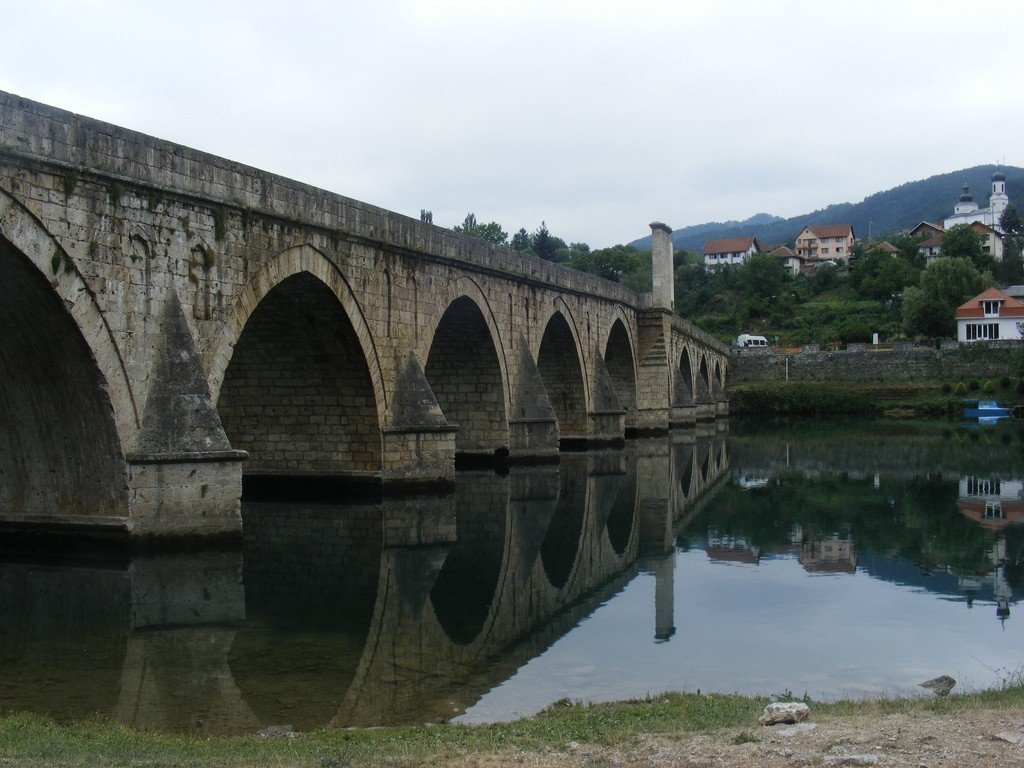
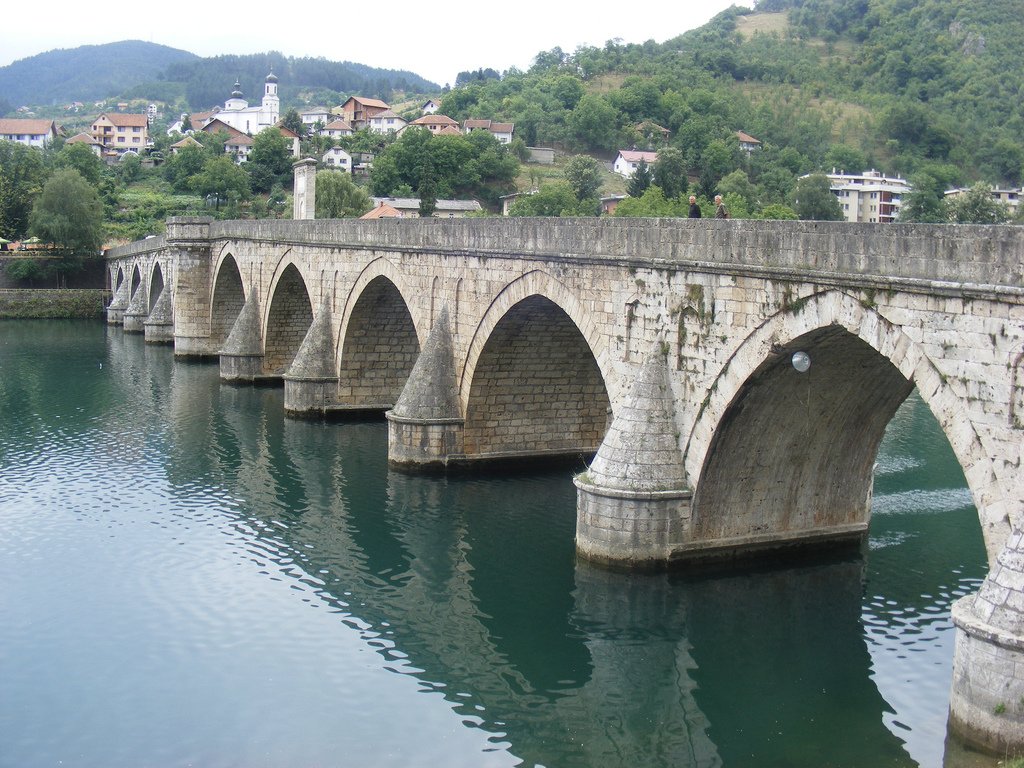
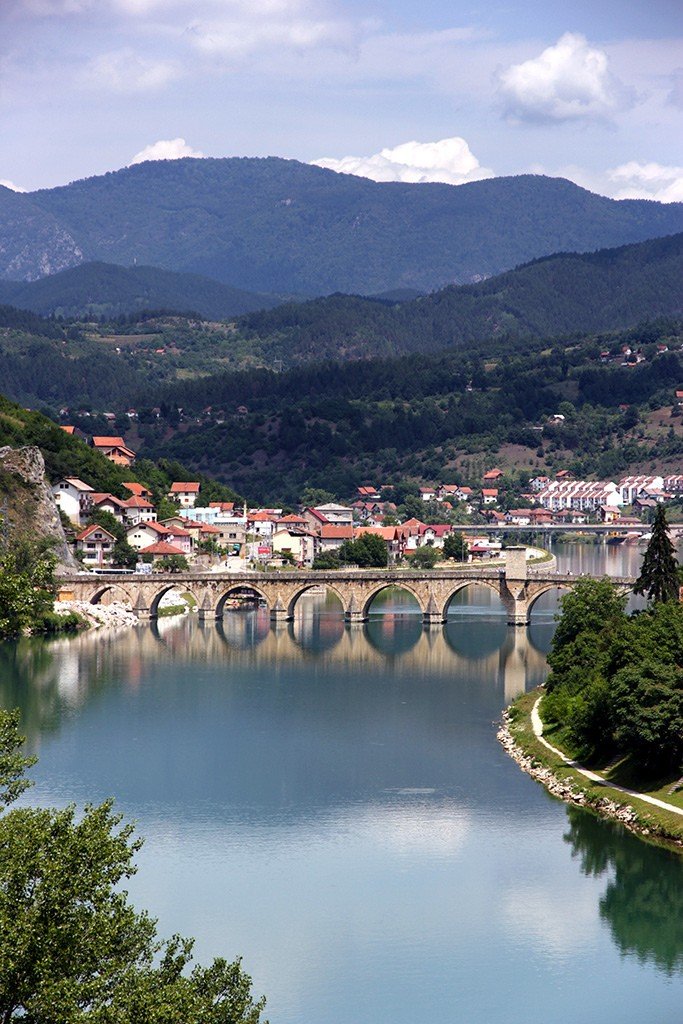
Video: Visegrad Bridge
” title=”YouTube video player” frameborder=”0″ allow=”accelerometer; autoplay; clipboard-write; encrypted-media; gyroscope; picture-in-picture; web-share” allowfullscreen>General Information
Nowadays, the ancient bridge is popular with lovers of romantic walks. Its rounded spans perfectly match the surrounding landscapes and clear river water. Reflections of the stone bridge, the buildings of Višegrad, green mountains and blue sky seem to float in the air. In order for travelers to admire the picturesque scenery to their heart’s content, a small observation deck has been created on one side of the Višehrad Bridge.
.
When writer Ivo Andrić (1892-1975) was writing a novel about the history of the region during the Ottoman Empire, he chose the title “Bridge on the Drina”. The work was published in 1945 and became very popular. In 1961, the writer was awarded the Nobel Prize for Literature. Nowadays, on the eastern bank of the Drina, right next to the Visegrad Bridge, there is a monument to Ivo Andrić, and on the opposite, western bank of the river there is a street named after this writer and a beautiful cobbled embankment.
.History of the bridge
The bridge over the Drina River was built in 1577 according to the project of the famous architect and engineer Sinan from stone quarried in the town of Banja, which is located 5 km below Višegrad. Since the customer of the construction was a native of Serbia Sokollu Mehmed Pasha, the bridge was named after him.
.
For a long time, the Visegrad Bridge remained an important place for the Turks, as it separated Bosnia and Serbia. An oak tower stood in the middle of the bridge, where border guards were constantly on duty. The tower had a strong oak gate and five cannons. In 1886 there was a severe flood, during which the water in the river rose by 1.6 meters, and the wooden tower was demolished.
.
During World War I, 3 bridge spans were destroyed during the fighting, and in 1943 another 5 spans were badly damaged. However, in the post-war years, the architectural monument was fully restored.
LegendLike any ancient substructure the Visegrad Bridge has its own legends. The most popular one tells of a mermaid who prevented the builders from erecting a bridge over the Drina. Every night she destroyed everything they had managed to build during the day. It seemed that the problem would not be solved, but one day the bridge builders received advice. To make the river maiden retreat, they had to find two newborn babies and wall them up in the middle supports.
.
The search took a long time and finally, in a distant village, the builders found a woman with two tiny twins, a boy and a girl. The Turkish ruler forcibly took them from their mother and took them to Višegrad, and the inconsolable woman hurried after her children on foot.
As predicted, the babies were bricked up in the pillars, but one of the builders took pity on the mother and left a hole in the stone so that she could feed the babies. Now every year at the same time, thin whitish streams flow into the river from the holes in the pillars, leaving indelible traces on the stone.
.How to get there
The Visegrad Bridge is located in the eastern part of Republika Srpska, in the territory of Bosnia and Herzegovina. It crosses the river in the historical center of Višegrad. From the city of Sarajevo, Visegrad can be reached by shuttle buses. The 150 km journey takes approximately 3.5 hours.
.